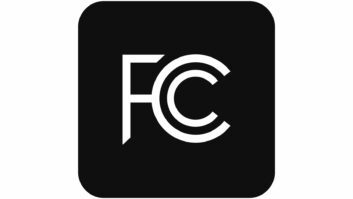
I dare you to subscribe to a radio station e-mail newsletter that isn’t in your city. Pick a station you’ve never heard of, but has a format that interests you.
Here’s what will happen: First, you’ll go that station’s Web site and have a tough time finding out how to subscribe.
Once you locate the opt-in page, you’ll receive an out-of-date auto-response when you subscribe.
The auto-response text will be worded poorly and not signed by a station personality.
This auto message will not have a link in it for you to read the most current e-letter instead of having to wait a week or longer to receive your first issue.
When the inaugural e-letter finally does appear in your inbox, the subject line will offer you no real reason to open it.
Once opened, you’ll see a laundry list of reasons to tune in to that radio station — but no good reason to read the e-letter because it has no actual content.
You’ll wonder why listeners of that station would waste their time signing up for marketing messages and advertising. You’ll also wonder why the station is wasting its time with this garbage when they could be engaging more people via Facebook and Twitter.
In-box win
All cynicism aside, I’m not saying the e-letter is dead quite yet.
A handful of stations make great e-letters and have substantial numbers of regular readers. Yes, social media could make e-letters irrelevant in the not-distant future — but in the meantime, how can you win in this space?
(click thumbnail)
The e-mail newsletter signup page for CBS station WWJ(AM) in Detroit. Stations with successful e-letters have a method of sanity. They start with the notion that people want to read actual content and not just be bombarded with marketing messages about station tune-in.
If they’re sending an e-letter to a country music fan, that e-letter must have the very latest news about performers in that format; entertainment information that fits the lifestyle — like what’s going on locally for the family in that coming weekend; movie reviews; NASCAR news; and links to unique video(s), new songs, and a place to provide feedback or opinion easily via a link to Facebook.
After the e-letter has been completed, ask several staffers and friends to check it for typos and errors (which, by the way, are more commonly found with e-letters from news/talk and sports formats). Be sure also to ask your volunteer proof readers if everything is stated clearly and if they find the e-letter entertaining. Take their feedback seriously.
Next step is to determine a subject line that will get the recipient actually to open the e-letter. Putting the name of the station and the date in the subject line is a huge mistake because it banks on the power of the station brand to translate into action. Few stations have this kind of authority. You’ll obtain a much higher open rate by using emotion, controversy, sex, or a promise of delivering info that they’ll hear first from you.
How do you measure success? There are e-mail delivery programs that measure open rate, click-throughs and more; I’ve been told repeatedly by web experts that none are completely accurate. At the least, however, these logs present you with you a baseline to measure against. Even the most simplistic e-mail delivery program does offer you the unsubscribe rate. It’s vital that you do keep track of your unsubscribe rate so you can see what’s working for you and what isn’t.
Few stations can sustain more than one e-letter per week. Sending out more also potentially raises your unsubscribe rate simply because your listeners do have a real lives with little free time, so don’t push too hard.
One trend worth watching is how youth audiences are dealing with e-mail as a tool. There is evidence that for many 12- to 24-year-olds, Facebook has significantly lowered interest in checking e-mail with frequency.
So, if your e-letter has been like the one described at the start of this article, what should you do?
Once you’ve got something you’re proud of, promote it heavily on-air. Offer specific reasons for listeners to sign up. Prod with incentives like free tickets or T-shirts. In your first few new e-letters, solicit feedback and then read it on the air.
Last, I recommend you not send out standalone advertising to your database. Your unsubscribe rate will soar and your open rate will plunge. You can still make money with banner ads or sponsorships in e-letters — just make sure that content remains king.
The author is president of Lapidus Media. Write to[email protected].












